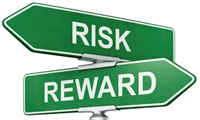Email Marketing 2020 -- The Art of Scale
 I had the opportunity to sit in on an executive presentation by Seth Godin. While it was a bit strange to see Seth trying to fit his routine into the email marketing industry, his outlook on solving big and small problems is sound. His way of communicating profound things in small bites is his talent. He said, “If it scares you, it might be a good thing." Email never really scared people, it was a safe place to start a career. Well, hitting send for the first time will unnerve you, even for the most tenured email markers. Email is a relatively low risk channel by comparison. It is having ISP driven technology limits, it has governmental and global compliance and privacy laws and the inbox experience hasn’t largely changed, outside of Google’s continued dominance.
I had the opportunity to sit in on an executive presentation by Seth Godin. While it was a bit strange to see Seth trying to fit his routine into the email marketing industry, his outlook on solving big and small problems is sound. His way of communicating profound things in small bites is his talent. He said, “If it scares you, it might be a good thing." Email never really scared people, it was a safe place to start a career. Well, hitting send for the first time will unnerve you, even for the most tenured email markers. Email is a relatively low risk channel by comparison. It is having ISP driven technology limits, it has governmental and global compliance and privacy laws and the inbox experience hasn’t largely changed, outside of Google’s continued dominance.
The one thing that stands us today versus 10 years ago is: Scale problems. It's not half as risky today choosing a new ESP as it was 10 years ago. There are more consultants, more analyst evaluations and more community to share experiences amongst buyers.
Technology companies are going through a cycle of re-invention, some better than others. Many taking aggressive acquisition paths to scale, and new and adjacent entrants coming at it from specialty focuses (mobile, data management, personalization engines). The marketer is left with tons of decisions, varying definitions of what scale means to their company and the "oh sh*t" moment of making the decision to change to another provider. Given the sensitivity to risk, it makes a ton of sense that the “people and fit” are typically the highest consideration for choosing to switch vendors. Interesting for a technology choice, where people are the differentiator.
What gets lost in this endless search for a competitive technology advantage. Remember, you buy technology for parity, not for differentiation. Your differentiation is the pace you set
The root issue with scale it is largely misunderstood in terms of value. It is normally seen as a modifier of strategy, not a goal. Today, email marketers possess a bit of a whack-a-mole perspective and have a survivalist attitude. Understandable, when cost and effort are low, you have a commodity.
The only way we will “see around corners” is by being hyper focused on scale and the things that you can repeat, you can program, and things you can automate. Boring topic, but the differentiation in any leading marketing organization is tied to your ability to take the 60% that you do every day and minimize the labor cost it takes to produce that.
Scale to me is best explained through two things, Technology and Personalization:
- Technology that fits is the best statement for today’s times. There are endless options to choose today and tons of parity between platforms. What many lose sight of is that customization and technical debt is what shackles many budgets and risk profiles. We have new technologies that are sophisticated yet make the work more complex to sustain. Sounds counter intuitive to innovation themes, right? I’m not discounting the technology, as much as I am the user and finding the right fit for the digital maturity of your organization today. Reality is the innovation in email marketing has nothing to do with the inbox experience as much as it does trying to gap the constraints the business has. Speed of processing, cost of hosting, response time to web inquiries, call center response handling are all functions where speed and innovation and in email no different. The problem with so much at your fingertips, is you run out of fingers to utilize it. When thinking of technology and scale, contemplate the scale variables with any technology (uptime, burst rate capacity, compliance) with user scale issues (data processing, targeting, creative design, personalization, staging, journey orchestration, automation, testing and analysis). Can the technology save me time in a sustainable way? I think many lose sight that changing technologies is an opportunity to change how you do things. If we embrace the attitude of Seth Godin in our pursuit of technology infused change, your risk profile as a company and operating professional will change dramatically.
- Personalization is maybe one of the most frustrating words in the marketing dictionary since I began my career. It's this general phrase that has taken on so many meanings and even today when you say personalization you need to span 5-7 categories in the Lumascape chart. It's sexy, it's what we all like to talk about, and it's endlessly broad and equally frustrating at the executive levels. In the email marketing industry, personalization, unlike the web, has not allowed for creative expression within a regulated, free consumer inbox. Personalization is the creative expression, the filtered context and the ability to mine, optimize and predict how you can infuse your brand into the lives of your customer. Email took a funny curve. Years ago, we could deliver video email, with commerce embedded in the email and then we went through email prohibition where the ISPs figured out that JavaScript could be used for bad. Fast forward today and the ability to deliver rich inbox experiences, to some, not all, domains is the next real question email marketers will face. How do we deliver the most impact at every point of the customer experience? How do we tie convenience, entertainment and timing all predicated on the consumer’s action, not the campaign schedule? Scale again is the theme. Ask any CMO about how their personalization strategies are scaling and you’ll get a long-winded response or a real short-one. Reality is the industry has sold marketers on the idea that personalization at scale is achievable with minimal disruption. That’s just wrong! Technology enables you to change faster, but “change” is the key word. I see many companies using the same processes they’ve used. I see the creative process just as manual and complicated as it has ever been. I see email marketers on the never-ending whack-a-mole game with no end in sight. Technology will help you democratize decisioning across your marketing processes, versus a linear campaign flow that is littered with workarounds and teams with their own processes. The challenge most face is they outsource proof of concepts and don’t get the “scale” value out of the Proof of Concept exercise. Not just change, but what area of change is needed to get the most value of the technology.
I’ll take Seth’s quote and add a little T.S Eliot to his sentiments on risk, “Only those who risk going too far, can possibly find out how far to go.” When was the last time you had your hand slapped for taking a risk in your company? With that in mind, I’ll leave you with this when grabbling with trade-offs. As a mentor of mine said to me many times in the past when I had requests, he’d say, “So, what do we not do to make what you want to do happen?” Scale is this decision times 100, every day. If you really want to stand out today, challenge what you do, don’t let risk hinder your development and don’t be complacent.

 How to resolve AdBlock issue?
How to resolve AdBlock issue? 
